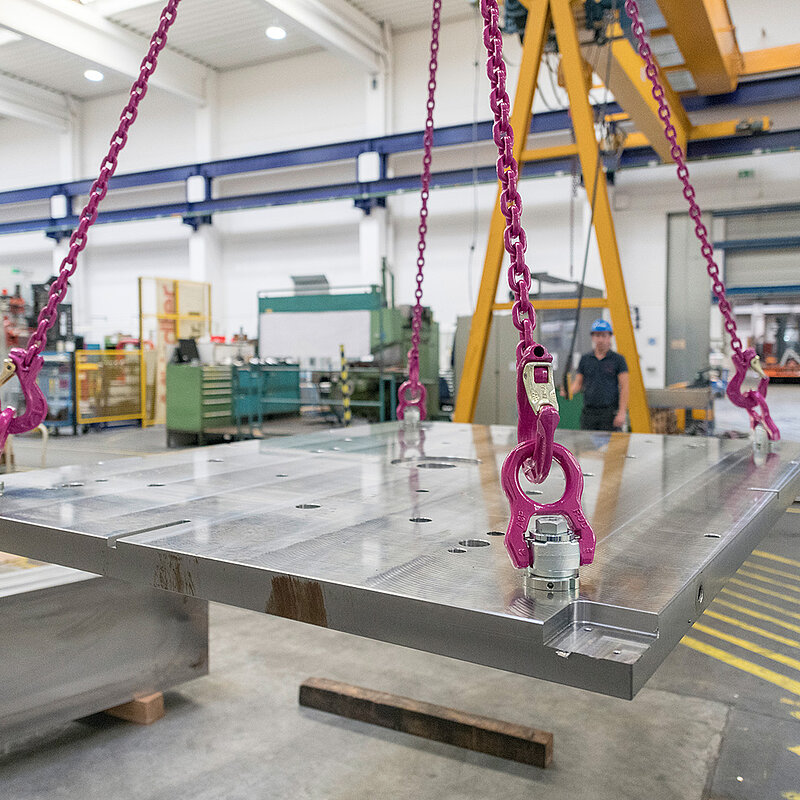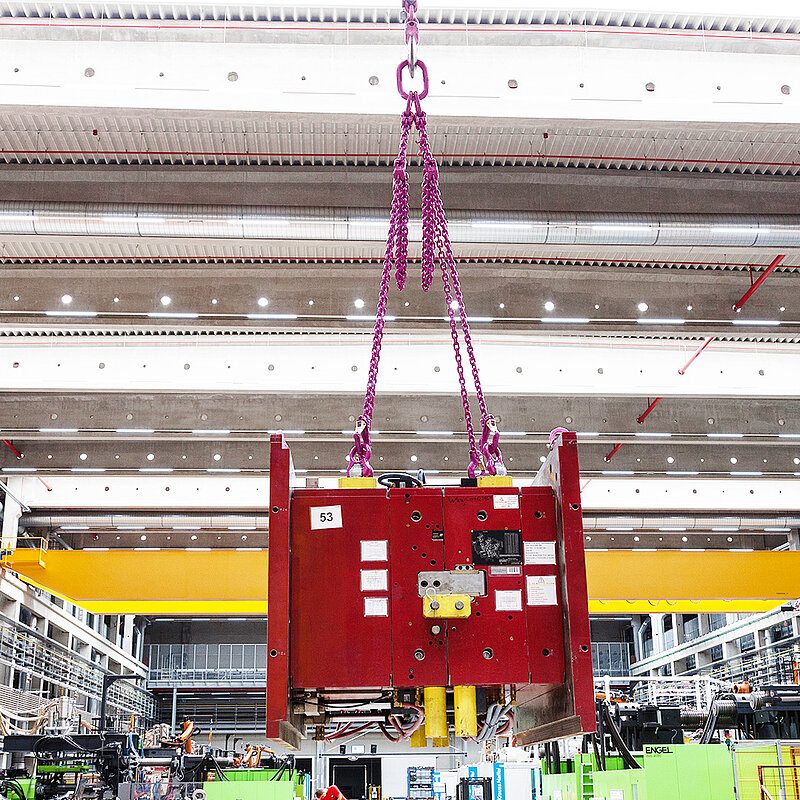LIFTING AND MOVING LOADS MADE EASY - WITH SOLUTIONS FROM RUD.
Whether with slings or lifting points: As a technological think tank, RUD is constantly setting new standards and, as the world market leader, is shaping progress in the field of lifting technologies. Our claim: Highest quality and best customer orientation!

RUD anchor points.
An attachment point is an important part of the lifting gear system and connects the lifting goods to the crane when lifting, turning, turning and moving loads. Lifting points are eyebolts, eyelets, fixing lugs etc. to which the lifting gear is attached with hooks, shackles or other connecting elements.
In lifting technology, RUD lifting points have stood for the highest quality for decades. Ergonomics and safety. Over 700 tested screwable and weldable variants in load ranges up to 250t, combined with the wide range of applications of our ICE and VIP slings, meet the highest requirements in all application areas.
The RUD range includes screwable lifting points with load capacities of up to 250t and weldable variants with up to 100t WLL. All load-bearing parts are 100% crack-tested. They can withstand a 4-5-fold load until breakage.
RUD slings.
In the world of slings, chain slings form the connection between the load-bearing equipment and the load. They consist of several components. You can purchase ready-configured slings - depending on the weight, size and shape of the load.
The components of a sling are
- Suspension head
- Chain (in one or more strands)
- End component (e.g. hook)
- If necessary, connecting elements (for connecting two chains)
- If necessary, shortening elements (for shortening chains)
- Other elements if necessary (e.g. rocker)
Chain slings can be configured very flexibly depending on the load to be lifted. The variety of available components and load capacities is high, so that a large number of lifting tasks can be solved with one sling. For example, the chains of a chain sling can be easily and safely extended or shortened using special components.

